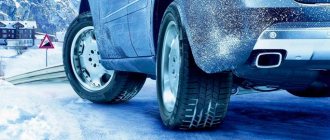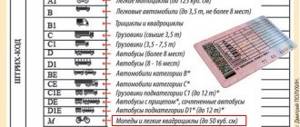Content:
- Differences between winter tires and summer tires
- What can be the consequences of using winter tires in summer?
- Traffic regulations
- Fines for driving a car on winter tires in summer
- When is the right time to change your winter tires to summer tires?
- Conclusion
With the establishment of warm weather in the regions, many drivers are faced with a number of difficult questions: is the air warm enough to change winter tires to summer ones, will there still be evening and morning frosts, have the queues at tire shops subsided? Such a keen interest in changing climatic conditions is very understandable: with the onset of a thaw, it is important to promptly change your car to tires for the season. The comfort and safety of driving depends on this. However, there are also those drivers who believe that friction Velcro and tires for mild European winters are quite suitable for use on summer roads. Is this so, and how dangerous is untimely replacement of tires, and what are the consequences of using tires out of season? You will find answers to these and other questions in this article.
Who should rush to change tires?
The Germans came to interesting conclusions. Tests carried out by ADAC tested the performance of both new tires and those already clearly worn. As it turned out, owners of winter tires undergoing replacement do not need to rush to replace them, like owners of new winter and ice tires. For winter tires with 3-4 mm tread, the largest difference in braking performance was 6 m to the detriment of winter tires . According to German experts, a lower tread can also mean less “floating” effect , which manifests itself in the instability of the car when passing through arches.
We read therein that this act is not against the law in the case of people using a car to commute to work or to meet their daily needs. Although there is no risk of going for vulcanization now, you should be careful. If you do not plan to leave the city in the near future, you can postpone your visit to a specialist until later.
Differences between winter tires and summer tires
Before answering the question of whether it is possible to drive on winter tires in the summer, it is worth taking a closer look at the characteristic differences between seasonal tires and the features of their operation. The difference between tires for a particular season lies in the tread pattern, compound composition and production technology. Summer tires and those used for winter always differ in the degree of hardness and level of adhesion to different types of road surfaces. This is due to the peculiarities of their operation. For example, summer tires for a car must withstand high temperatures and cope with braking on dry asphalt. The main elements of winter tires are considered to be dirt, snow and ice, where they should exhibit better grip and at the same time not become stiff in the cold. All-season tires stand out, which are suitable for use in regions with mild winters and not very hot summers. These tires act as a kind of intermediate option between summer and winter tires, but like any universal solution, they have a number of serious drawbacks. All-season tires don't handle hot temperatures as well as summer tires and don't brake as effectively on snow and ice as those designed specifically for winter.
Special markings will help you understand that you have winter tires. These tires are labeled "M+S" (or "M&S"), which indicates that they can be used for driving in snow and mud. The same markings are also on all-season tires, but they do not have one more element - a pictogram in the form of a snowflake against the backdrop of the Three Mountains. The latter indicates that the tires are suitable for use in cold, harsh winter conditions.
Differences between summer and winter tire compounds
In the production of seasonal tires, different rubber compounds are used. The composition of summer tires includes those particles that allow them to maintain characteristics when operating in positive temperatures up to +50-55 degrees. Winter tires have a different compound. It is designed for use in a separate climate zone with air temperatures in the range of +5-0 degrees and up to -45 degrees.
Differences between the tread patterns of summer and winter tires
In summer, cars travel mainly on good asphalt roads, which means they reach higher speeds. In this case, the tires must satisfy not only safety requirements, but also provide a comfortable ride, minimal fuel consumption, and good maneuverability. Winter tires face a slightly different task. These tires must cope with the rapid removal of water, slush from snow and mud, and brake well on slippery surfaces. For this reason, winter tires have a fairly deep tread with larger blocks and a more impressive number of sipes, which are often multidirectional. Additionally, metal spikes can be installed on such tires. They provide better grip on ice and packed snow. In summer, spikes are not only unnecessary, but also pose a danger to the driver. The use of studded tires also negatively affects the quality of the asphalt surface. For this reason, the tread of summer tires cannot be with spikes, and the blocks themselves are smaller in size, and the number of lamellas is significantly reduced.
What can the use of winter tires in summer lead to?
From year to year, there are those drivers who neglect logic and common sense and, in an attempt to save money, continue to drive winter tires in the summer. This often causes very disastrous consequences: from high levels of wear of expensive tires to the car getting into accidents of various sizes. So, let’s figure out why you can’t drive on winter tires with or without studs (Velcro) in the summer. Features of the compound and tire tread structure cause deterioration in the performance characteristics of winter tires when high temperatures occur. This causes the following negative consequences.
- Higher fuel consumption and tire noise.
- Less resistance to hydroplaning.
- Long braking distance on dry roads.
- Rapid tire wear.
- Excessive heat generation.
It is worth noting that winter tires are heavier than tires used in summer. This affects directional stability in different conditions and leads to increased fuel consumption. In addition to the practical side of the issue, do not forget about safety standards. Driving on winter tires in summer is dangerous, since the car handles worse on dry roads, may not be able to quickly remove the watery film from the tire contact patch and will have an increased braking distance.
How do winter tires behave on the road in summer?
The behavior of the car is strikingly different from the standard form, where the seasonality of consumables is observed. If using spikes is generally considered blasphemy, then riding with Velcro will not cause such serious damage. This is only at first glance. Digging deeper, you can stumble upon the physical characteristics of the material and understand that winter is completely inapplicable for summer, due to the following reasons.
Braking distance of winter tires in summer
When operating a car at moderate temperatures up to +15 degrees Celsius, the driver will not notice much difference in the braking of the car. Tests have shown that when the tires heat up above the limit and at the same speed, an identical car on summer tires stops 1.5-3 car lengths earlier than its counterpart on Velcro. This state of affairs can provoke a serious accident and put the lives of road users at risk.
Fuel consumption on winter tires in summer
If you drive on tires in the warm season, the car will consume an increased amount of fuel - this is a proven fact. A rubber compound designed for cold conditions is completely unsuited to heat. Under the influence of temperature, the material softens and spreads, which prevents free rolling and, as a result, the machine rolls over.
According to research results confirmed by field tests, a car “shod” in winter consumes 10-15% more fuel in summer than the same car with the right tires.
Can winter tires be used off-road in summer?
This is not recommended. This is justified by the same softening of the composition. When driving on bumpy terrain in the heat, the sidewalls of the tire lose their rigidity, which contributes to “folding” when hitting rocks or hard protrusions of the ground. In such a situation, it is very easy to damage the soft walls and provoke the appearance of hernias or even a breakthrough.
The second negative factor is the risk of depressurization of the tubeless model on the rim. During a side exit, the flexible structure can fly off the seat and instantly fall down.
There are exceptions where such exploitation is acceptable. In the autumn-spring period, at an outside temperature of no more than +15°C.
This is interesting: What kind of bolt pattern on Geely MK
Traffic regulations
Lawmakers have repeatedly tried to introduce official restrictions against driving on winter tires in the summer. Relevant projects were submitted for discussion in 2009 and 2014. The first provided for a fine of 500 rubles for driving using studded winter tires on cars in the summer, the second implied a penalty of 2 thousand rubles. Both bills were rejected. The only requirement that remains relevant: when using studded tires, the driver must stick a special warning sign on the rear window of the car. However, if the current Russian legislation and traffic regulations do not directly prohibit driving in the summer on friction or European winter tires, then there are still restrictions for tires with studs. In the Technical Regulations of the Customs Union TR CU 018/2011, which was adopted in 2015, there is a special section in Appendix No. 8. Paragraph 5.5 states that in summer it is forbidden to drive on winter tires with studs, and in winter you cannot install summer tires on a car. It also says that the summer period is considered to be the months from June to August, and the winter period lasts from December to February. This Technical Regulation is valid throughout the Russian Federation, but in some regions the timing of the onset of winter and summer may shift depending on climatic conditions.
What do the traffic rules say?
The direct answer to our main question says absolutely nothing useful. Traffic regulations regulate the condition of tires and wheels, as well as the combination of their use on different axles.
But whether it is possible to drive on winter tires in the summer, as well as the possibility of using summer tires in the winter, is regulated by the Technical Regulations of the Customs Union “On the safety of wheeled vehicles.” It is he who prohibits the use in the summer months of tires labeled as winter, but only studded.
5.5. It is prohibited to operate vehicles equipped with tires with anti-skid studs in the summer (June, July, August). …. The terms of the operation ban may be changed upward by regional government bodies of the member states of the Customs Union.
Thus, you can drive in the summer on winter tires if they are not studded, but studded ones are prohibited.
You will also be interested in:
- Is it possible to knock out the catalyst? What are the consequences: fine and technical inspection?
- When do you need to switch to summer tires from winter tires according to the new law?
- In winter on summer tires: what are the requirements and the penalty?
Fines for driving a car on winter tires in summer
If the driver of the car violated the requirements of TR CU 018/2011 and continued to drive in the summer on winter tires, he can get off with a simple warning. However, traffic police officers may not only inquire about the tire markings, but also the remaining tread depth. According to current standards, it must be at least 4 mm for winter tires and at least 1.6 mm for those tires used in summer. If this requirement is violated, the driver of the car will be fined in the amount of 500 rubles (Part 1 of Article 12.5 of the Code of Administrative Offenses of the Russian Federation).
Are there any advantages?
There is, but only one. The cross-country ability of winter tires in mud is slightly better than that of summer tires.
***
Driving on winter tires in the summer will not be fun, it is unsafe and harmful to your wallet. But in a critical situation, you can move around, “observing the necessary precautions” - as, in fact, it is written in the traffic rules.
- You will find the entire range of information about tires and wheels on our tire portal. Need good tire storage cases? A wide range and fair prices are available in the Za Rulem online store.
When is the best time to change winter tires to summer tires?
If you rely on the requirements of the Technical Regulations of the Customs Union, you need to install summer tires on your car before June. This can be done at the end of the winter period (from March, unless otherwise provided by regional standards and regulations). Auto experts recommend changing winter tires to summer tires when a thaw sets in, when the air warms up to +7 degrees during the day. In practice, in such weather, precipitation is still possible, especially at night. Winter tires will cope better with them, so you should install them on your car at a time when the air warms up to +10 degrees during the day.











